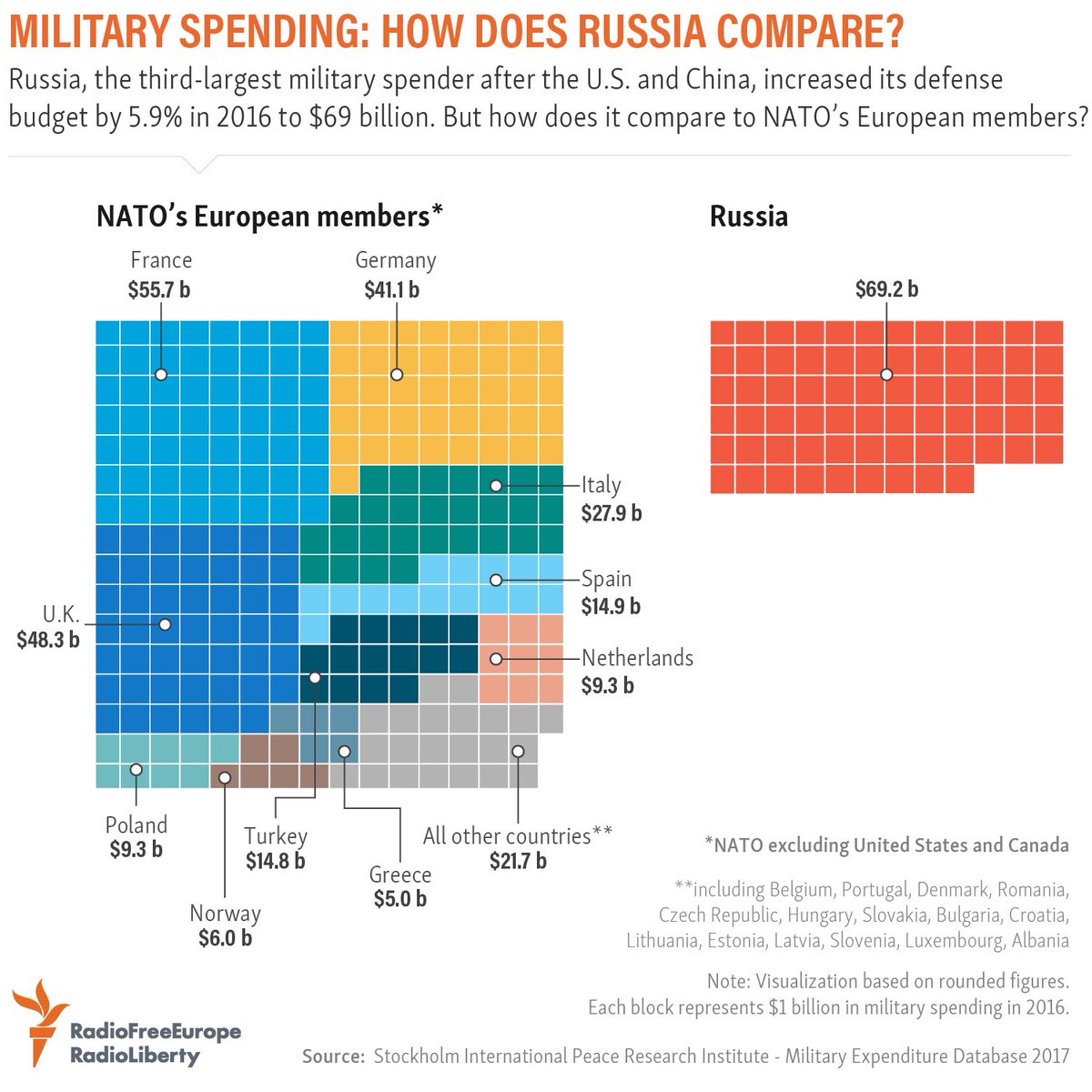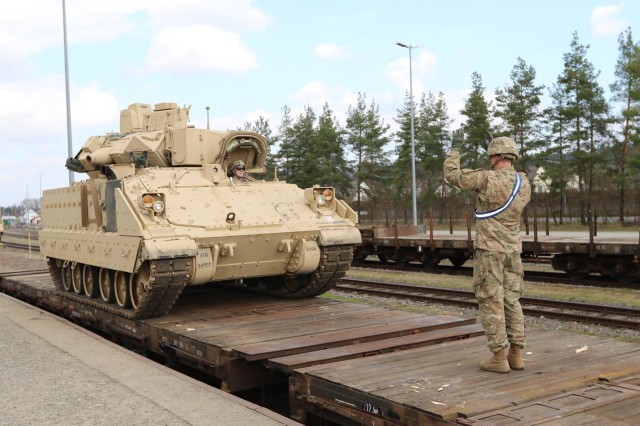Infrastructure investment can enhance deterrence, military mobility in Europe
By C. Todd LopezJune 22, 2017
1 / 1 Hide Caption – Soldiers from Headquarters and Headquarters Company, 3rd Armored Brigade Combat Team, 4th Infantry Division, guide an M2A3 Bradley Fighting Vehicle off rail cars at the Grafenwoehr Training Area, Germany, March 29, 2017. Army leaders are looking for ways to improve transportation of equipment throughout Europe. (Photo Credit: Sgt. Ange Desinor)
VIEW ORIGINAL
WASHINGTON (Army News Service) -- European allies in the NATO partnership don't necessarily need to grow their own force structure to increase their contributions to the alliance, said Lt. Gen. Ben Hodges, who serves as commander of U.S. Army Europe.
Instead, the general said, during a June 20 discussion sponsored by the Association of the U.S. Army, NATO partners could contribute by assisting in developing an infrastructure in Europe that enables the alliance to work more efficiently.
Hodges suggested that NATO allies purchase heavy equipment transport systems, or HETTs, to enable movement of materiel goods through the European continent, for instance.
He also asked for NATO nations to find ways to improve the efficiency of movement through the continent on rail and road -- which is made difficult now by regulations required to move between countries.
"Provide transportation for us," Hodges said. "Guaranteed rail access. 48 hours. Enough rail to move a brigade."
He also asked nations to spend to upgrade rail heads in their own countries.
"Anything that improves frequent movement, I think those are quick ways," Hodges said. "Buy fuel. Buy ammunition. Provide storage sites. I'm not looking for more German tank battalions, or more British artillery battalions, but ways they can contribute to the alliance, and improve the infrastructure, and improve freedom of movement ... these are some ways, I think."
Movement of forces in Europe, Hodges said, is a complex task, not just due to the diplomatic clearances required, but also to the distances that must be traveled. He said he thinks that as the United States makes the move from an assurance posture in Europe to a deterrence posture, it will become increasingly more important to streamline the movement of forces and materiel.
He also said understands why some nations might be resistant to making changes in how military forces can move through their borders.
"There is going to be a natural reluctance and resistance to do anything that is provocative, if they can avoid a crisis," he said.
In the short term, the general said, he recognizes that deterrence operations such as the training and exercises conducted with allied nations, for instance, and the movements throughout Europe that will need to happen to make those exercises possible, will have to happen under "peacetime conditions."
"Anybody that thinks, don't worry we'll be able to drive anywhere. Not true. Anybody who thinks you'll be able to fly anywhere at night. Not true. Anybody who thinks you won't have to have ADR-compliant fuel trucks and ammo trucks. Not true. Everything we do prior to declaration of Article 5, is going to be done in peacetime conditions."
Despite concerns about movement throughout Europe, and contributions to defense by partner nations, Hodges was clear to point out the commitment the United States has to partner nations in NATO and the significance of those relationships.
"We are not going to go anywhere by ourselves," he said. "So we need to have people we trust, that we train with, that we know."
VISIBLE COMMITMENT TO EUROPE
While Hodges said the U.S. commitment to Europe is strong, he said he learned that something as simple as vehicle color might convey the wrong message about that commitment.
Hodges said he recalls seeing a video of tanks rolling down a ramp in Bremerhaven, Germany. He said he'd been initially excited about seeing the video and the message he thought it conveyed about the strength of the U.S. Army and the commitment the Army and the United States had to European partners.
He recalls an Air Force friend of his asking him why the tanks in the video were painted tan, telling him "nothing says transient like a tan tank in Europe."
"So that morning green paint became a strategic communications goal," he said. "We reminded the Army that there are three places we probably want to fight with tanks, and two of them are green."
For 20 Euros, Hodges said, "you can paint entire Stryker group with green paint, and the troops are doing it. And it'll wear off by the time their rotation is over."









